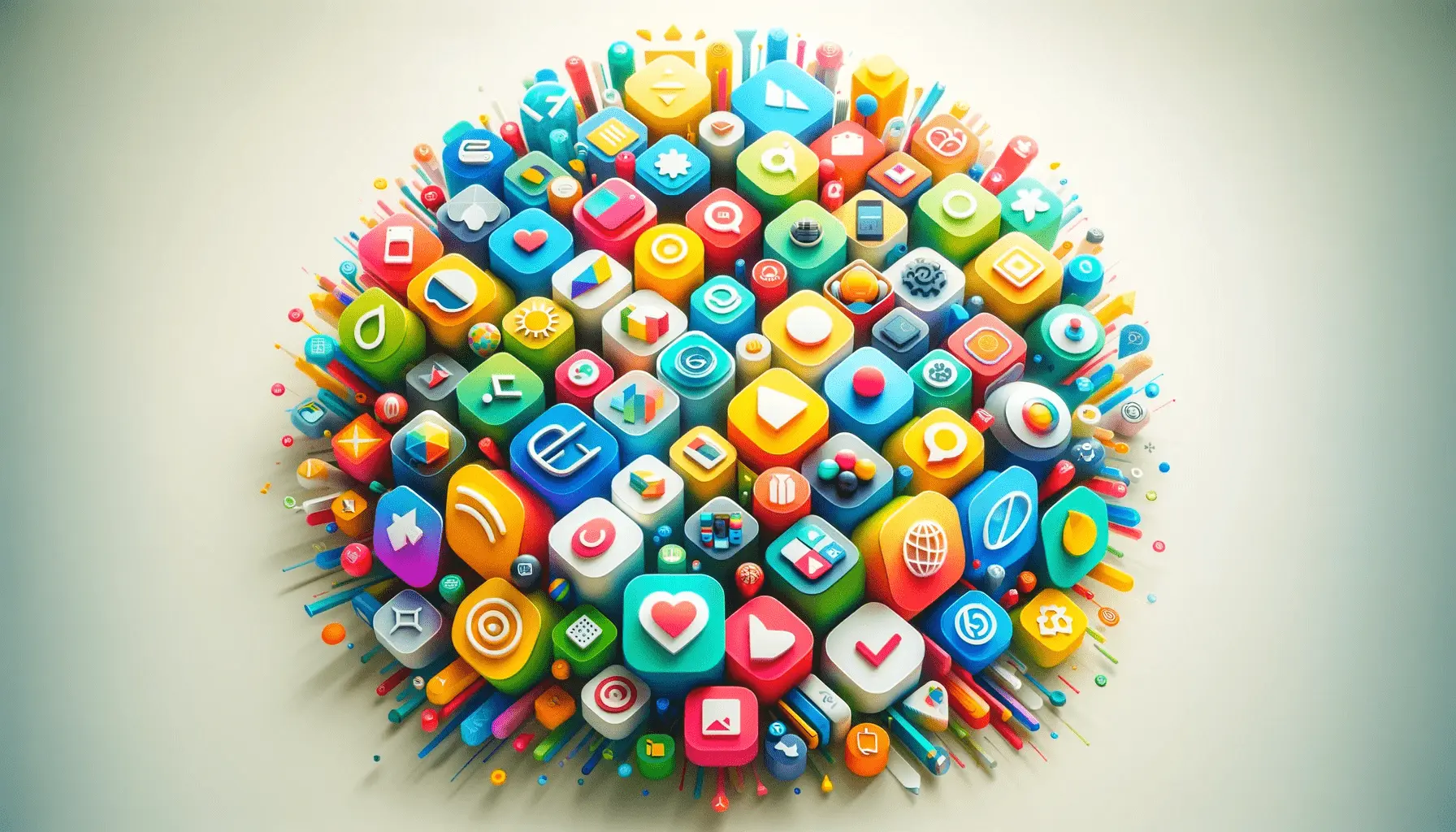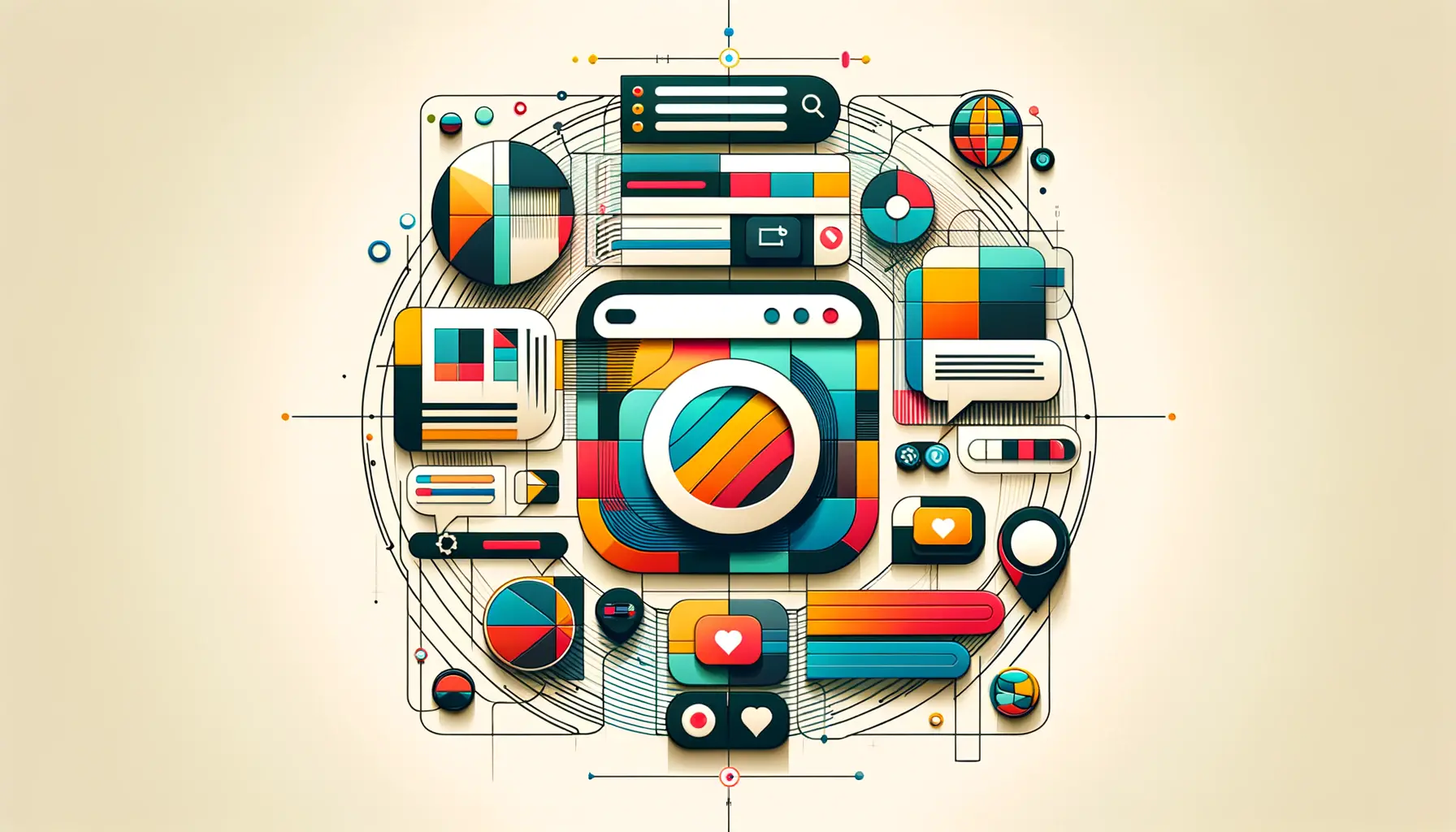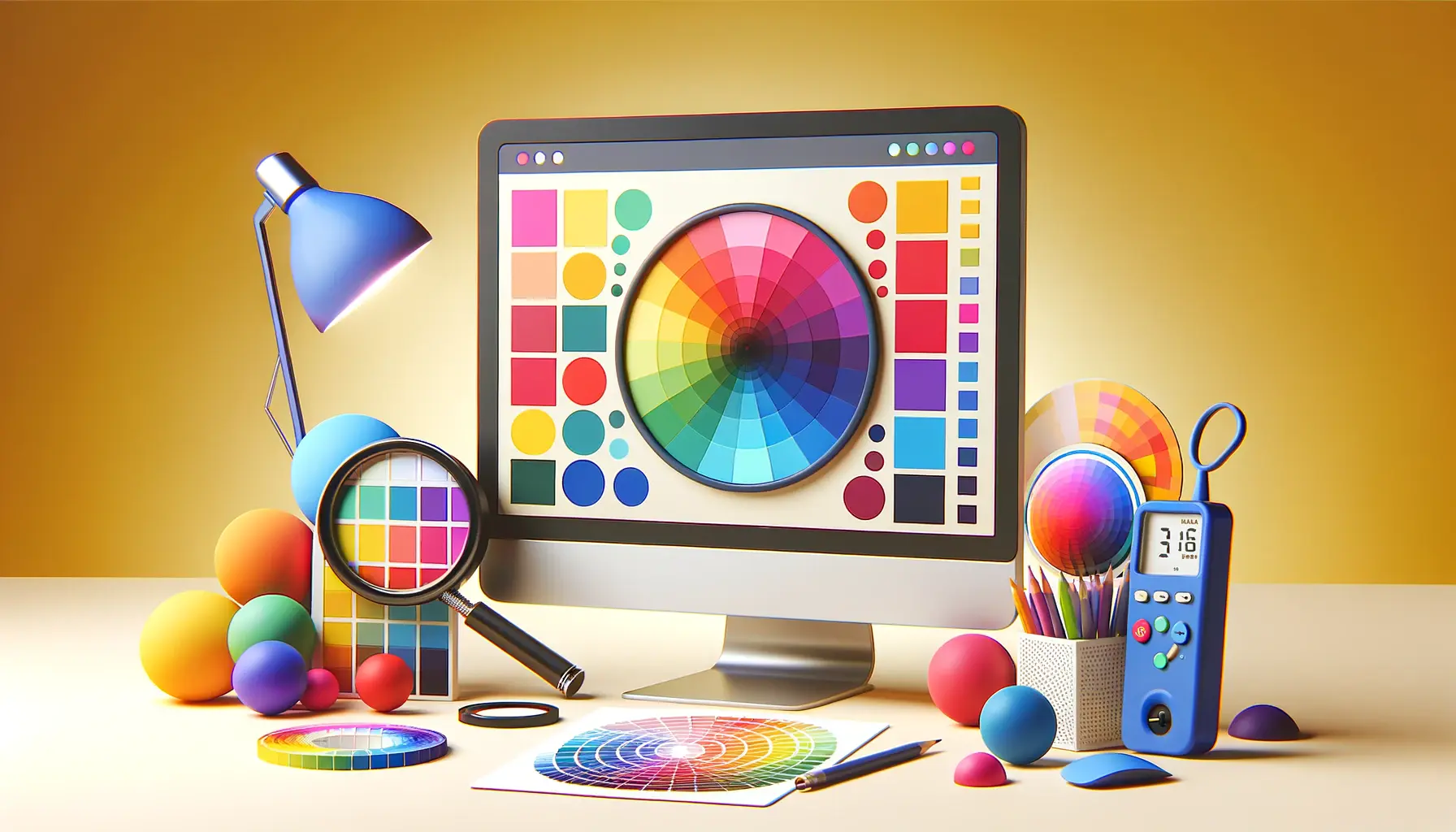Imagery is not just a visual aid on a brand’s website; it’s a powerful tool that can significantly enhance the user experience, convey the brand’s message, and ultimately, contribute to the brand’s identity.
In a digital age where the average internet user is bombarded with information, standing out and making a memorable impression is crucial for brands.
The strategic use of imagery on a website can be the difference between a forgettable visit and a lasting impact on a potential customer.
Understanding the role of imagery in branding is essential.
It goes beyond mere decoration; imagery communicates values, evokes emotions, and tells the brand’s story.
When used effectively, it can increase engagement, improve user experience, and drive conversions.
The challenge for brands, however, lies in selecting and utilizing images that align with their identity, values, and goals.
This requires a thoughtful approach, one that considers the various types of imagery, their placement, and their impact on the audience.
- Understanding the Power of Imagery in Branding
- Strategies for Selecting the Right Imagery
- Optimizing Imagery for Web Performance
- Incorporating Imagery into Website Design
- Enhancing Brand Storytelling with Imagery
- Measuring the Impact of Imagery on Website Engagement
- Future Trends in Website Imagery
- Empowering Your Brand with Strategic Imagery
- FAQs: Enhancing Your Brand’s Website with Imagery
Understanding the Power of Imagery in Branding
The Psychological Impact of Images
Images have the unique ability to communicate complex messages quickly and effectively.
The human brain processes images 60,000 times faster than text, making imagery a critical component of website design.
This rapid processing allows brands to convey their message and evoke the desired emotional response from their audience almost instantaneously.
Whether it’s trust, excitement, or calm, the right imagery can set the tone for the entire brand experience.
Moreover, the psychological impact of imagery extends to memory retention.
People are more likely to remember information that is accompanied by relevant images.
For brands, this means that carefully chosen imagery can enhance recall of their message or product, making it more likely for a visitor to remember and return to their website.
Imagery as a Storytelling Tool
Every brand has a story, and imagery is a powerful medium to tell it.
Through visuals, brands can illustrate their history, values, and vision without overwhelming visitors with text.
This storytelling aspect is crucial for building a connection with the audience.
It transforms the brand from a faceless entity into a relatable character in the customer’s journey.
Effective storytelling through imagery can foster a sense of loyalty and emotional investment in the brand.
Additionally, the use of consistent and high-quality imagery across the website reinforces the brand’s identity.
It creates a visual language that is unique to the brand, making it easily recognizable and differentiating it from competitors.
This consistency is key to building a strong brand image and ensuring that the brand’s message is clear and coherent across all touchpoints.
The strategic use of imagery can significantly enhance a brand’s website, influencing both the user’s emotional response and their memory retention.
Strategies for Selecting the Right Imagery
Selecting the right imagery for your brand’s website goes beyond just choosing visually appealing photos.
It involves a strategic process that aligns with your brand’s identity, values, and goals.
The images you choose should not only capture the attention of your audience but also communicate your brand’s message effectively.
Here are some key strategies to guide you in selecting the right imagery for your website.
Align Images with Brand Identity
Every image on your website should be a reflection of your brand’s identity.
This means choosing images that resonate with your brand’s values and aesthetic.
For instance, a brand that values sustainability might opt for imagery that features nature and eco-friendly practices.
Consistency in the style, color scheme, and mood of the images across your website reinforces your brand identity and contributes to a cohesive brand image.
Consider Your Target Audience
Understanding your target audience is crucial in selecting images that will resonate with them.
Consider the demographics, interests, and preferences of your audience.
What type of imagery are they likely to find appealing or relatable?
For example, a brand targeting young professionals might use imagery that reflects an active, ambitious lifestyle.
Tailoring your imagery to your audience’s preferences can enhance engagement and connection.
Emphasize Quality and Relevance
The quality of the images you use on your website cannot be overstated.
High-quality, professional images not only enhance the aesthetic appeal of your site but also convey a sense of credibility and professionalism.
Equally important is the relevance of the images to your content.
Ensure that every image serves a purpose and adds value to the content it accompanies.
Irrelevant or generic images can detract from the user experience and dilute your brand’s message.
- Use Authentic Images: Authentic, original images are more effective in creating a genuine connection with your audience than stock photos. Whenever possible, invest in custom photography that showcases your products, services, and team.
- Opt for Diversity: Reflect the diversity of your audience in the imagery you choose. This inclusivity can make your brand more relatable and appealing to a wider audience.
- Consider the Emotional Impact: Images have the power to evoke emotions. Choose images that evoke the desired emotional response that aligns with your brand’s message. Whether it’s a sense of calm, excitement, or trust, the right emotional tone can enhance the effectiveness of your imagery.
Selecting the right imagery involves a balance between authenticity, quality, and relevance, tailored to both your brand identity and your target audience’s preferences.
Optimizing Imagery for Web Performance
While high-quality imagery is crucial for enhancing your brand’s website, it’s equally important to ensure that these images do not adversely affect your site’s performance.
Large, unoptimized images can lead to slow loading times, negatively impacting user experience and search engine rankings.
Here are strategies to optimize your website’s imagery for performance without compromising on quality.
Firstly, understanding the balance between image quality and file size is key.
High-resolution images are necessary for a visually appealing site, but they often come with large file sizes.
The goal is to compress these images to the smallest possible size while maintaining their visual integrity.
This can be achieved through various tools and techniques designed for image optimization.
- Choose the Right File Format: JPEG, PNG, and WebP are common file formats, each with its advantages. JPEG is ideal for photographs due to its compression capabilities, while PNG is better for images requiring transparency. WebP, a newer format, offers high-quality images at smaller file sizes compared to both JPEG and PNG.
- Implement Responsive Images: Ensure your images are responsive, meaning they adjust to fit the screen size of the device being used. This not only improves the user experience but also reduces unnecessary data consumption on smaller devices.
- Use Image Compression Tools: Tools like Adobe Photoshop, TinyPNG, or ImageOptim allow you to reduce file sizes significantly without a noticeable loss in quality. These tools remove unnecessary metadata and compress the image to a web-friendly size.
- Leverage Browser Caching: Browser caching stores website resources on a local computer when a user visits a webpage. By enabling caching for your images, you can reduce loading times for repeat visitors, enhancing the overall user experience.
- Utilize Lazy Loading: Lazy loading is a technique that loads images only as they are about to enter the viewport. This means that images at the bottom of a page won’t be loaded until the user scrolls down, improving initial page load times.
Optimizing images for web performance is a critical step in website development.
It ensures that your site remains fast and efficient, providing a positive user experience while still showcasing high-quality imagery that enhances your brand’s message.
Proper image optimization balances visual quality with web performance, ensuring that your site’s loading times are minimized without sacrificing the impact of your imagery.
Incorporating Imagery into Website Design
The integration of imagery into website design is more than just placing photos on a page; it’s about creating a visual narrative that complements and enhances the content and user experience.
A well-designed website uses imagery strategically to guide visitors through the site, highlight key information, and convey the brand’s message.
Here are essential considerations for incorporating imagery into your website design effectively.
Layout and Composition
How images are laid out on your website plays a crucial role in the overall user experience.
A well-thought-out composition can draw the visitor’s eye to the most important information and make the content more digestible.
Consider using grids, frames, and contrasting sizes to create a dynamic layout that engages visitors.
Additionally, the placement of images should be intentional, with each image serving a clear purpose in the narrative of the page.
Consistency Across the Site
Maintaining a consistent style and quality of imagery across your website is vital for creating a cohesive brand image.
This consistency extends to the color scheme, tone, and style of the images.
It helps in building a recognizable brand identity and ensures that the website feels unified from page to page.
Consistency in imagery also aids in creating a predictable and comfortable user experience, which can encourage longer visit durations and deeper engagement with the content.
Interactive and Dynamic Elements
Incorporating interactive elements, such as hover effects, sliders, or galleries, can make the imagery on your website more engaging.
These elements invite users to interact with the content, providing a more immersive experience.
Dynamic imagery, such as videos or animations, can also be used to capture attention and convey complex information in an easily digestible format.
However, it’s important to balance these dynamic elements with the overall performance of the site, ensuring that they do not slow down loading times.
- Accessibility Considerations: Ensure that all images on your website are accessible to all users, including those with disabilities. This includes using alt text for images, which describes the image content for screen readers, and ensuring that interactive elements are navigable with keyboard controls.
- Visual Hierarchy: Use imagery to establish a visual hierarchy on your website. Larger, more prominent images can draw attention to key areas, while smaller images can be used to supplement information. This hierarchy helps guide visitors through your content in a logical and engaging manner.
Effective incorporation of imagery into website design requires careful consideration of layout, consistency, and interactivity, ensuring that images enhance rather than detract from the user experience.
Enhancing Brand Storytelling with Imagery
Imagery is a powerful tool for storytelling, allowing brands to convey their narrative in a way that words alone cannot.
A compelling brand story can build emotional connections with the audience, making the brand more memorable and relatable.
Here’s how to use imagery to enhance your brand’s storytelling and connect with your audience on a deeper level.
Choose Images That Reflect Your Brand’s Journey
Select images that tell the story of your brand’s journey, including its origins, milestones, and what it stands for.
These images should reflect the personality and values of your brand, whether it’s adventurous, luxurious, eco-friendly, or community-focused.
By visually representing your brand’s journey, you invite your audience to be a part of it, fostering a stronger emotional connection.
Use Visual Metaphors to Convey Complex Ideas
Visual metaphors can be a powerful way to convey complex ideas or values in a simple and impactful way.
For example, a brand that values innovation might use imagery of space exploration or cutting-edge technology.
These metaphors help communicate the brand’s values and aspirations visually, making them more accessible and relatable to the audience.
Showcase Real People and Stories
Incorporating images of real people, including customers, employees, and community members, can make your brand story more authentic and relatable.
These images provide a human element to your brand, showcasing the impact of your products or services on real lives.
Customer testimonials, behind-the-scenes looks at your operations, and community involvement are all powerful stories that can be enhanced with imagery.
- Highlight Customer Experiences: Use imagery to showcase customer experiences and testimonials. This not only adds credibility to your brand but also illustrates the value your products or services bring to people’s lives.
- Incorporate User-Generated Content: Encourage your audience to share their own photos and stories related to your brand. User-generated content is authentic and can significantly enhance your brand storytelling by showing real-world applications of your products or services.
- Visual Consistency: Ensure that the imagery used in your storytelling is consistent with your brand’s visual identity. This consistency helps reinforce your brand’s message and identity across different platforms and mediums.
Leveraging imagery to tell your brand’s story can create a more immersive and emotional experience for your audience, deepening their connection to your brand.
Measuring the Impact of Imagery on Website Engagement
The use of imagery on your brand’s website is not just about aesthetics; it’s a strategic decision that can significantly impact user engagement and conversion rates.
To ensure that your imagery is effectively contributing to your website’s goals, it’s crucial to measure its impact.
Here are key metrics and methods to help you understand how imagery influences website engagement.
Analytics and User Behavior Data
Web analytics tools like Google Analytics provide valuable insights into how users interact with your website.
Key metrics to monitor include page views, bounce rate, and time on page.
A high bounce rate or low time on page may indicate that your imagery is not engaging or relevant enough.
Conversely, pages with compelling imagery often see higher engagement levels.
Additionally, heat mapping tools can show where users are focusing their attention, highlighting which images are drawing interest and which are being overlooked.
A/B Testing with Different Imagery
A/B testing is a powerful method to measure the impact of different images on user behavior.
By creating two versions of a webpage, each with different imagery but identical in other respects, you can directly compare their performance.
Metrics such as conversion rates, click-through rates, and engagement levels can indicate which images resonate more with your audience.
This data-driven approach allows for informed decisions about the imagery used throughout your website.
User Feedback and Surveys
Direct feedback from users can provide insights into how your imagery is perceived and its impact on the user experience.
Surveys, user interviews, and feedback forms can ask specific questions about the imagery, such as its relevance, emotional impact, and contribution to the brand’s message.
This qualitative data complements the quantitative data from analytics, providing a fuller picture of imagery’s effectiveness.
- Engagement Metrics: Monitor engagement metrics closely to see how changes in imagery affect user interaction. Look for trends over time, especially after updating or changing images on key pages.
- Conversion Rates: Pay special attention to conversion rates on pages with significant imagery. An increase in conversions can indicate that your imagery is effectively motivating users to take action.
- Image Load Times: Keep an eye on image load times and their impact on overall page performance. Slow-loading images can negatively affect engagement metrics and SEO rankings.
Measuring the impact of imagery on website engagement is essential for optimizing user experience and achieving your website’s objectives. Utilize a mix of analytics, A/B testing, and user feedback to make data-driven decisions about your imagery strategy.
Future Trends in Website Imagery
The digital landscape is constantly evolving, and with it, the trends in website imagery.
Staying ahead of these trends can give your brand a competitive edge, ensuring that your website remains engaging, relevant, and visually appealing.
Here are some emerging trends in website imagery that brands should be aware of.
Augmented Reality (AR) and Virtual Reality (VR)
AR and VR technologies are becoming more accessible, offering new ways for brands to engage with their audiences through immersive experiences.
For instance, online retailers can use AR to allow customers to visualize products in their own space before making a purchase.
This not only enhances the user experience but also can significantly increase conversion rates.
Authentic and Inclusive Imagery
Consumers are increasingly seeking authenticity and inclusivity from brands.
This trend extends to website imagery, with a shift away from polished, idealized images towards more realistic, diverse representations.
Brands that embrace this trend can build deeper connections with a broader audience, reflecting a more inclusive society.
Dynamic and Interactive Images
Dynamic images that change based on user interaction or data provide a more personalized and engaging user experience.
Interactive elements, such as hover effects, image sliders, and animations, can make a website more engaging and memorable.
These dynamic and interactive images can also help convey complex information in an accessible way.
AI-Generated Imagery
Artificial intelligence is making strides in the creation of custom imagery, offering brands the ability to generate unique visuals that are tailored to their specific needs.
AI-generated imagery can range from product visuals to marketing materials, providing a cost-effective and scalable solution for brands looking to stand out with their visual content.
- Sustainability in Imagery: With growing concern over environmental issues, imagery that reflects sustainability and eco-consciousness is becoming more prevalent. This trend aligns with consumer values and can enhance a brand’s image as environmentally responsible.
- Micro-Animations: Small, subtle animations can add life to a website without overwhelming the user. These micro-animations can guide users’ attention, improve navigation, and enhance the overall aesthetic of the site.
- 3D Elements: The use of 3D elements in web design is on the rise, offering a new level of depth and realism to website imagery. This can be particularly effective for product showcases and interactive experiences.
Keeping up with the latest trends in website imagery, such as AR/VR, authenticity, interactivity, and AI-generated visuals, can help your brand stay relevant and engage with your audience in innovative ways.
Empowering Your Brand with Strategic Imagery
In the digital age, where the visual component of branding is increasingly paramount, the strategic use of imagery on your brand’s website can significantly elevate the user experience, enhance brand identity, and drive engagement.
This article has delved into the multifaceted role of imagery in branding, offering insights into its psychological impact, storytelling power, and the technical considerations for optimizing web performance.
The essence of leveraging imagery effectively lies in its thoughtful integration into every aspect of your website, from design and layout to content and interactivity.
Key Takeaways for Maximizing Imagery Impact
To harness the full potential of imagery in enhancing your brand’s website, consider these critical takeaways:
- Align imagery with your brand identity and values to create a cohesive and recognizable brand image.
- Optimize images for web performance to ensure a seamless user experience without compromising on quality.
- Incorporate imagery strategically within website design to guide visitors, convey messages, and evoke the desired emotional response.
- Leverage the storytelling power of imagery to connect with your audience on a deeper level, making your brand more memorable and relatable.
- Stay abreast of emerging trends in website imagery, such as augmented reality, inclusivity, and AI-generated visuals, to keep your brand relevant and engaging.
As we’ve explored, imagery is not just an aesthetic addition to a website; it’s a critical branding tool that, when used strategically, can transform the user experience, convey complex messages, and set your brand apart in a crowded digital landscape.
By focusing on the selection, optimization, and innovative use of imagery, brands can create more engaging, effective, and memorable websites.
Looking Ahead: The Future of Imagery in Branding
The future of website imagery is dynamic and promising, with advancements in technology and shifts in consumer expectations driving innovation in how brands use visuals to communicate and connect.
As we move forward, the integration of interactive and immersive elements, alongside a commitment to authenticity and inclusivity, will define the next wave of digital branding.
Brands that anticipate and adapt to these changes, prioritizing the strategic use of imagery, will not only enhance their online presence but also deepen their connection with their audience, paving the way for lasting engagement and loyalty.
In conclusion, the power of imagery in enhancing a brand’s website is undeniable.
It’s a potent tool that, when wielded with intention and strategic insight, can elevate your brand’s digital footprint, engage your audience in meaningful ways, and ultimately, contribute to your brand’s success in the digital realm.
The journey of integrating imagery into your brand’s website is ongoing, requiring continuous adaptation and innovation to stay ahead of the curve.
By embracing the strategies and insights outlined in this article, your brand can leverage imagery to its fullest potential, creating a website that not only looks visually stunning but also resonates deeply with your target audience.
Quality web design is key for a great website! Check out our service page to partner with an expert web design agency.
FAQs: Enhancing Your Brand’s Website with Imagery
Discover how to effectively use imagery to elevate your brand’s online presence.
Imagery captivates users, communicates your message, and significantly improves the overall user experience on your website.
Define your brand image style, choose relevant and authentic images, and use consistent formats and sizes for a cohesive look.
Effective imagery engages visitors, enhances user experience, and is crucial for conveying your brand, products, or services compellingly.
Utilize diverse imagery types to boost your brand’s connection with users, drawing inspiration from successful brands for stronger engagement.
Images make a significant impact, working alongside your content to enhance your website’s appeal and reinforce your brand identity.
Use high-quality, relevant images that align with your brand’s message to improve navigation and the overall user experience.
Strong imagery is crucial for creating a visually appealing site that reflects your brand’s identity and values, enhancing user engagement.
Images improve aesthetics, increase traffic, make your brand memorable, and drive sales through effective product photography.










